Plextor M5S 256GB Review
by Kristian Vättö on July 18, 2012 3:00 AM ESTInside the M5S
Since the M5S does not include any software discs or 2.5" to 3.5" bracket, the packaging is noticeably smaller than M3's.
There are absolutely no add-ons included. The only contents of the package are the SSD itself and a quick installation guide. It should be noted that not even mounting screws are included, so hopefully your case came with a few.
The chassis at least looks like it's the same as in the M3. The color is a match and both measure in at 9.5mm in height.
The innards have changed quite significantly. The M3 and M3 Pro both had separate thermal pads for each main component (controller, NAND, DRAM), but the M5S only has one thermal pad which is for the controller. This is without a doubt a cost cutting measure. Thermal pads are not really necessary as SSDs don't generate much heat anyway.
The M5S is powered by Marvell's 88SS9174-BLD2 controller, just like the M3 and M3 Pro were too. I was hoping to see Marvell's 88SS9187, but perhaps Plextor is saving that for "M5 Pro". According to Plextor, the M5S does come with a different firmware than the M3 and M3 Pro, although I'm guessing that the M5S firmware was built upon the M3 (Pro) firmware. It's likely that the M5S firmware just adds Micron NAND support.
The only change in hardware appears to be in the NAND department. The M3 and M3 Pro used Toshiba's 24nm Toggle-Mode 2.0 MLC NAND, whereas the M5S is using 25nm ONFi 2.x MLC NAND from Micron. The change in NAND supplier has also resulted in changes in the PCB layout. There are now sixteen NAND packages, eight on each side of the PCB. The M3 and M3 Pro both had only eight NAND packages, regardless of the capacity. The 256GB model we have uses 16GB packages, each consisting of two 8GB dies.
Plextor stuck with Nanya as its DRAM supplier. There are two 256MiB DDR3-1333 SDRAM chips, giving the M5S a total of 512MiB of cache.
The markings on the PCB actually say "M3S". Our unit is a pre-production sample, so that could be the reason but essentially the M5S is just an M3 with ONFi NAND.
Test System
| CPU |
Intel Core i5-2500K running at 3.3GHz (Turbo and EIST enabled) |
| Motherboard |
AsRock Z68 Pro3 |
| Chipset |
Intel Z68 |
| Chipset Drivers |
Intel 9.1.1.1015 + Intel RST 10.2 |
| Memory | G.Skill RipjawsX DDR3-1600 2 x 4GB (9-9-9-24) |
| Video Card |
XFX AMD Radeon HD 6850 XXX (800MHz core clock; 4.2GHz GDDR5 effective) |
| Video Drivers | AMD Catalyst 10.1 |
| Desktop Resolution | 1920 x 1080 |
| OS | Windows 7 x64 |



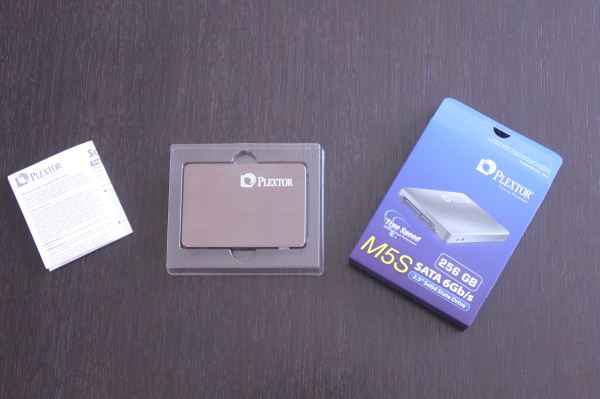

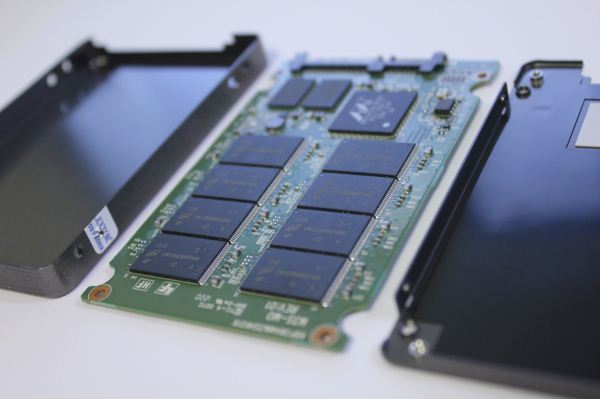
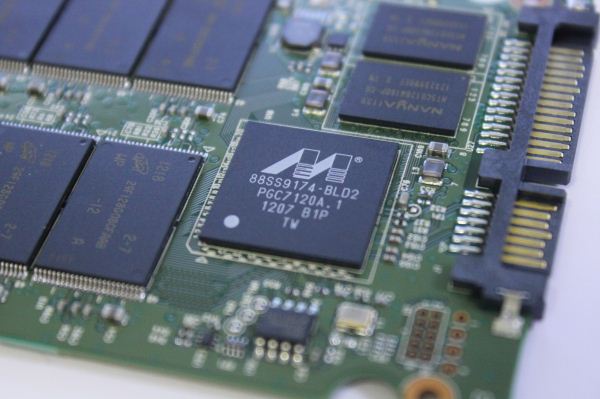
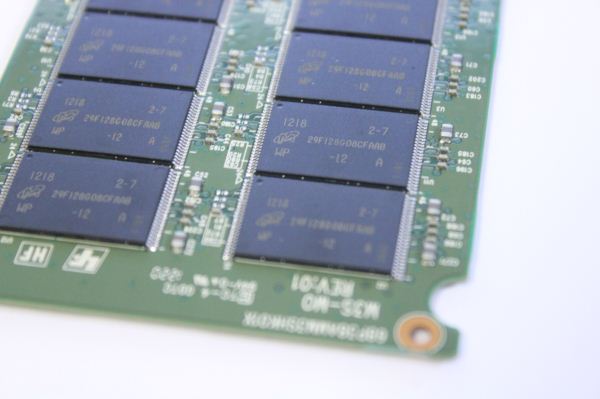

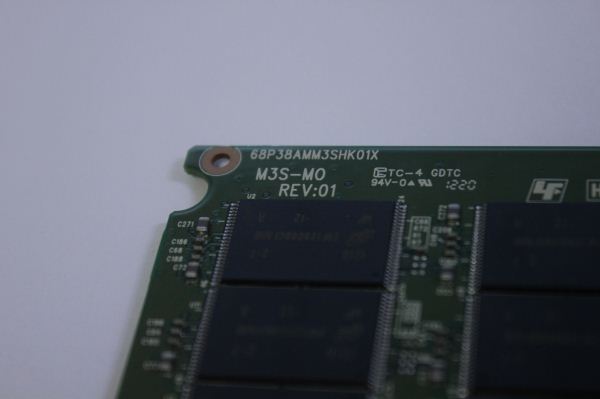








43 Comments
View All Comments
sulu1977 - Thursday, July 19, 2012 - link
Years ago I read that SSDs can easily last a lifetime of normal use, and if they fail, you never lose any data. Now I'm getting the feeling that they can have a higher failure rate than mechanical HDs. This is very disturbing. What's the real truth here?sheh - Thursday, July 19, 2012 - link
What worries me is the data retention period. The JEDEC JESD218A standard requires, when powered off, only 1 year of retention for Client class drives, and 3 months for Enterprise. This can be higher or lower depending on temperature. I suppose real flash exceeds that, and I suspect drives actively "refresh" stored data when they're powered on, but that's just a guess.I'd like to see an AnandTech article on SSD reliability, including retention, write endurance, trends as manufacturing processes get smaller, SLC/MLC/eMLC/TLC, etc.
sulu1977 - Thursday, July 19, 2012 - link
Just curious; how many of you would be willing to put priceless photos on a SSD and store it in a drawer for 5 years?sheh - Thursday, July 19, 2012 - link
There's a lack of info on data retention, so no.flensr - Thursday, July 19, 2012 - link
How come SSDs seem to always come in 9.5mm when that means you can't use them in many of the newer thin laptops? a 7mm drive can come with a super cheap plastic shim that would make them fit into a 9.5mm chassis, but you can never fit a 9.5mm drive into a 7mm chassis. 9.5mm is a stupid size for an SSD, period. If the SSD is put into a desktop, tower, or HTPC case then the height doesn't even matter at all, and 7mm drives can fit into any laptop using the 2.5" format, normal, slim, or even the less common 12mm height ones.Reviews ought to point out that these 9.5mm drives are totally worthless for upgrading many many laptops now that the slim drives are becoming much more common. Maybe the SSD manufacturers will figure out that there is really no reason at all to make ANY 9.5mm drives, since a simple plastic adaptor will make a 7mm drive fit snugly into a 9.5mm chassis while maintaining compatibility with many more laptops overall.
scbdpa - Thursday, July 19, 2012 - link
the m3 pro is 7mm. maybe the m5pro will be, tooggathagan - Thursday, July 19, 2012 - link
Why the vitriol?It makes you sound like a 12-year-old gamer on Xbox Live.
He states the thickness on the 3rd page of the review.
Given that there are many,many more laptops that CAN use the thicker drives, I don't know why you feel that extra attention needs to be given to that particular spec.
While it may be over the minimum thickness needed for an SSD, the size has been around ever since the laptop hard drive has existed.
I suspect that whoever 1st brought this type of SSD to market simply stuck with the same form factor and everyone else just followed suite.
I doubt a different height was even considered until notebook manufacturers started getting serious about notebook thickness and someone had a light bulb go off in their head.
flensr - Friday, July 20, 2012 - link
Why the vitriol? You prove my point completely in your post. None of your "reasons" make any sense if they put any thought into it, and a 7mm drive would fit into ALL laptops, not just "many many more". So a smart intelligent design choice would lead to compatibility with "all", rather than not thinking about it at all which leaves a growing number of potential customers with a sharply reduced set of options.Hmm. I think that just about defines "stupid" when it comes to marketing and design. Hence, my description of the design as "stupid".
As for what it "sounds like", you sound like a fanboi defending a stupid no-thought-involved design choice simply because the stupid decision doesn't impact you personally yet. You can try to explain it away all you like, but the fact remains that building 9.5mm SSDs excludes a growing percentage of the potential SSD customer base for no reason.
Making it worse, even among companies that do sell 7mm height drives, there is no standard for putting this in the specs. One or two sellers list "7mm" as a height, some go with something like "0.28 inches", and at least one simply describes their drives as "thin enough for slim profile laptops".
I'd have purchased at least 3 SSDs for my laptops by now, except that every time I start looking I find some lower-end ones listed as 7mm, some overpriced ones listed as "super slim on a diet!!!111one", and some with no thickness listed whatsoever that are out of stock yet which I know from a good review are the right size. After a while I put a "notify me" flag on one and give up. That's 3 drives I didn't purchase because the SSD manufacturers are building and marketing drives that exclude me, for no real technical reason. It is as if they don't want me to buy their drives. So I haven't yet. Maybe someday I'll go shopping for an SSD that got a good review, and it'll be competitively priced and have right in the specs "7mm height", and it'll be in stock. I'll buy right then. So far it's been a fight just to identify what size the drives actually are because they keep using the weird 9.5mm height for most drives and seem intent on hiding which drives are 7mm.
waldojim42 - Saturday, July 21, 2012 - link
Not sure what specs you need for a 7mm drive, but the M3 is 7mm and fits my W520 perfectly.JellyRoll - Friday, July 20, 2012 - link
The excuse for not disclosing the calculation method for write amplification is weak, at best.This calls into question the trustworthiness of the data. Any website that uses 'secret' methods of measurement should be called into question. Does the measurement method favor certain controllers, or types of NAND? Or does advertising revenue affect the results?